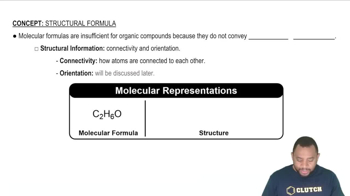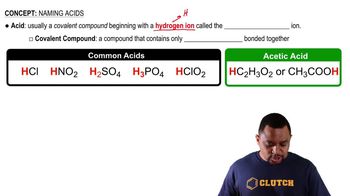Here are the essential concepts you must grasp in order to answer the question correctly.
Molecular Structure
Molecular structure refers to the three-dimensional arrangement of atoms within a molecule. It includes the types of bonds (single, double, or triple) and the angles between them, which influence the molecule's properties and reactivity. Understanding molecular structure is essential for predicting how molecules will interact in chemical reactions.
Recommended video:
Phosphorus Oxides
Phosphorus oxides are compounds formed from phosphorus and oxygen, with varying stoichiometries. Tetraphosphorus hexoxide (P4O6) and tetraphosphorus decoxide (P4O10) are examples that differ in the ratio of phosphorus to oxygen, affecting their chemical behavior and applications. Recognizing these oxides is crucial for understanding their roles in various chemical processes.
Recommended video:
Acids and Their Structures
Acids are substances that can donate protons (H+) in a solution, and their structures often include functional groups that facilitate this behavior. Phosphorous acid (H3PO3) and phosphoric acid (H3PO4) are both phosphorus-containing acids, with distinct structures that determine their acidity and reactivity. Familiarity with these structures helps in predicting their chemical properties and reactions.
Recommended video:
Acids and Their Structure
 Verified step by step guidance
Verified step by step guidance

